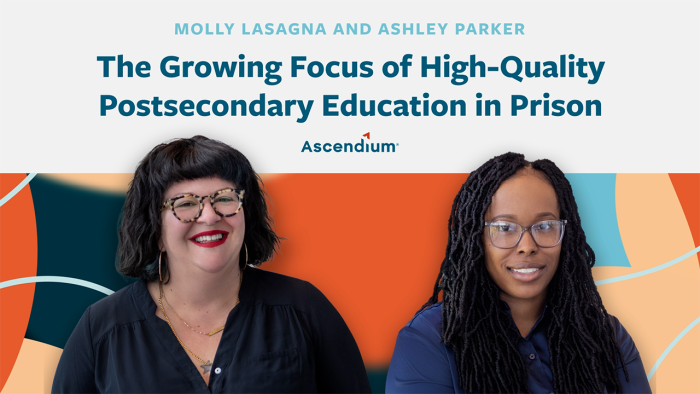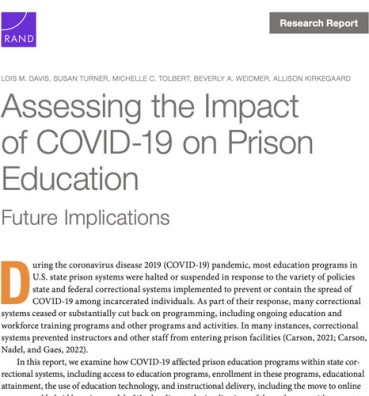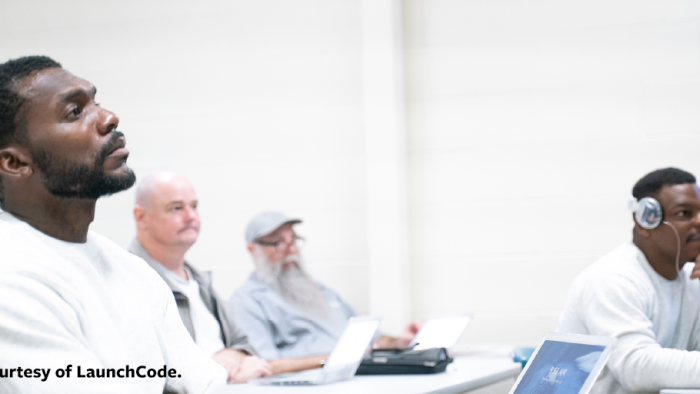
Q&A: Molly Lasagna on the State of Postsecondary Education in Prison Ahead of Pell Restoration

Molly Lasagna
This is a pivotal time for postsecondary education in prison. In 2020, the 26-year-old ban on Pell Grants for incarcerated learners was lifted. Starting in the 2023-24 academic year, people in prison will once again be able to apply for federal Pell Grants to pay for college courses — a major victory for incarcerated learners and their advocates.
However, there is still much to be done to ensure that postsecondary education in prison providers are ready for this moment. Senior Program Officer Molly Lasagna knows this well. Before joining Ascendium earlier this year, Molly worked in various roles in the postsecondary education in prison field and, among other achievements, led the creation and growth of a statewide network of state agencies and institutions of higher education called the Tennessee Prison College Coalition. Here, she shares her thoughts on the state of postsecondary education in prison, and what Pell restoration means for Ascendium’s grantmaking.
We’re a year away from Pell Grant restoration. How prepared are postsecondary education in prison providers to maximize this new funding? What obstacles or issues do you see that still need to be addressed prior to implementation?
The reintroduction of federal funding into our field presents so many exciting opportunities, and also a fair number of challenges. The availability of Pell Grants for students in prison will dramatically increase the number of students enrolled in postsecondary programs, which means we have the chance to help lots more people gain credentials that will set them up for future success. That said, there is work to do before we get there! Colleges and states will need to think carefully about questions of data collection, program design and responsible policymaking so they can build the infrastructure necessary to implement and replicate quality programs.
What do successful postsecondary education in prison programs look like in practice?
There is not yet a strong base of evidence regarding how to measure success in the field of postsecondary education in prison. But what we do know is that high-quality programs include student supports that reach beyond the classroom. The goal is to provide resources and services that take students from incarceration to graduation and then into meaningful employment. In my experience, quality is related not only to curriculum and material content that is aligned with student interest, but also to engaging modes of instructional delivery, individualized student advising and the creation of an intellectual (and physical) space for students to be in community with their peers. Just like their colleagues in the free world, incarcerated students excel when presented with options.
Why is Ascendium invested in supporting initiatives such as Ready for Pell?
It is incumbent upon those of us in positions to provide financial support to schools and states doing the hard work of expanding postsecondary education in prison to take a comprehensive approach to that support. This means that we think about the whole student, and all the supports necessary to build a wide and welcoming pathway for their college journeys. Ready for Pell is an example of such an effort; the aim of this initiative is to give postsecondary education in prison programs access to high-quality coaching around the challenges of administering Pell Grants, and then to evaluate the impact of that coaching so that we may share some learnings with the greater field. At Ascendium, we’re deeply committed to seeding work that will yield benefits greater than the sum of the work itself.
What are Ascendium’s other priorities as we look toward Pell restoration?
Pell Grant restoration is slated to take effect in July 2023, which means that we have about a year to really consider the lingering questions and gaps in resources before we see the field expand significantly. In this focus area, we are particularly interested in the challenges around data collection and data-systems design, because we know that institutions will be required to report on a myriad of student outcomes in order to receive federal funding. We are also taking the time and care necessary to think about the ways in which people, programs and state agencies organize themselves through strategic partnerships, so that we can help to surface, amplify and replicate the instances in which strong collaboration is happening.
As executive director of the Tennessee Higher Education Initiative (THEI), you were at the forefront of efforts to build a collective of Southern postsecondary education in prison programs and led the creation and growth of a statewide network of state agencies and institutions of higher education. How does that experience inform your current work at Ascendium?
During my tenure, THEI was first and foremost about relationships. I thought a lot about ways to support my staff and students as members of the THEI community, and also about the ways that THEI itself drew other programs into both its community and community-minded mission. Postsecondary education in prison doesn’t happen in a vacuum. It requires multiple partners contributing multiple facets of the work all in cooperative agreement with each other. At the state and regional levels, THEI became a standard-bearer for investing in relationships. Education is people work, and people work is relationship work. My orientation toward relationship-building helps me think about the work of our grantees as contributions to a larger community, and it helps me think about ways that Ascendium can honor and uplift the needs of its community members through strategic investment.


